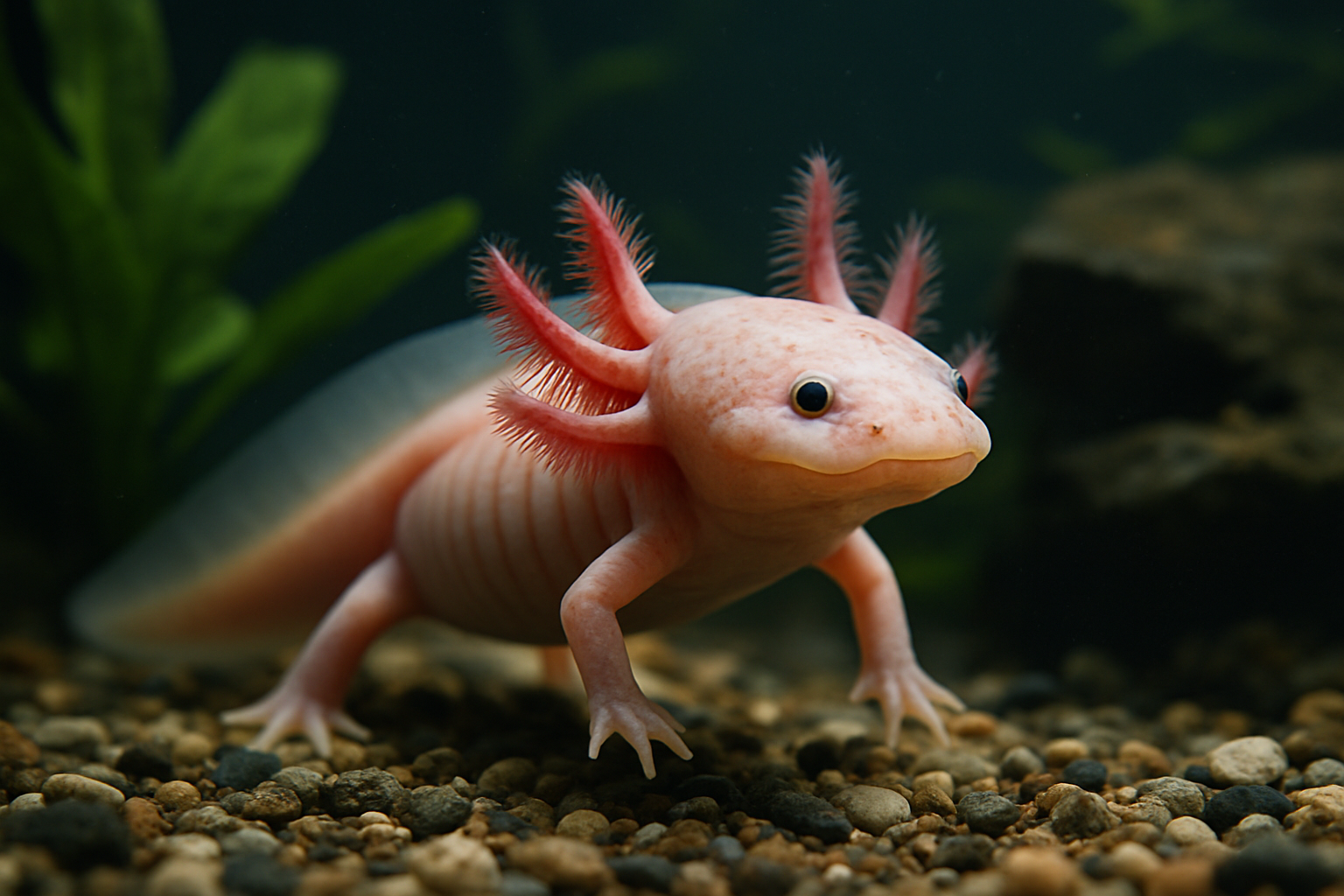Exploring the Fascinating World of Axolotls: Aquatic Marvels
The enigmatic axolotl, a salamander species native to Mexico, has captured the hearts of aquarium enthusiasts and scientists alike. These unique amphibians, with their otherworldly appearance and remarkable regenerative abilities, have become increasingly popular as pets and research subjects. This article delves into the captivating world of axolotls, exploring their biology, conservation status, and the growing trend of axolotl ownership.

The Unique Biology of Axolotls
Axolotls possess a range of extraordinary biological features that set them apart from other amphibians. Perhaps their most striking characteristic is neoteny, a phenomenon where they retain juvenile features throughout their lives. This means that adult axolotls keep their feathery external gills, giving them their distinctive appearance.
These amphibians also boast an impressive regenerative capacity. Axolotls can regrow not only limbs but also parts of their brain, spinal cord, and even heart. This remarkable ability has made them a focus of intense scientific study, with researchers hoping to unlock the secrets of tissue regeneration for potential medical applications.
Another fascinating aspect of axolotl biology is their ability to change color. While wild axolotls are typically dark or mottled, captive-bred specimens can display a wide range of hues, including pink, gold, and even albino variations. This color diversity has contributed to their popularity in the pet trade.
Conservation Challenges and Efforts
In their native habitat of Lake Xochimilco near Mexico City, wild axolotls face numerous threats. Urban expansion, pollution, and the introduction of invasive species have led to a dramatic decline in their population. The International Union for Conservation of Nature (IUCN) lists the axolotl as critically endangered, with some estimates suggesting that fewer than 1,000 individuals remain in the wild.
Conservation efforts are underway to protect the remaining wild axolotl population. These initiatives include habitat restoration projects, captive breeding programs, and public awareness campaigns. Some conservationists are exploring the possibility of reintroducing captive-bred axolotls into protected areas of their native range.
The Mexican government has also taken steps to safeguard the species, implementing regulations to limit water pollution and control invasive fish populations in Lake Xochimilco. However, the challenges facing wild axolotls remain significant, and continued efforts are crucial to ensure their survival in their natural habitat.
The Rise of Axolotls as Pets
In recent years, axolotls have gained popularity as exotic pets, particularly among aquarium enthusiasts. Their unique appearance, relatively low maintenance requirements, and gentle temperament have contributed to their appeal. However, potential owners should be aware of the specific care needs of these aquatic salamanders.
Axolotls require a carefully maintained aquatic environment with cool, clean water and appropriate filtration. They are sensitive to water quality and temperature fluctuations, making proper tank setup and maintenance crucial. Potential owners should also be prepared for the long-term commitment, as axolotls can live up to 15 years in captivity with proper care.
The price of pet axolotls can vary depending on factors such as color morph and availability. On average, axolotls may cost between $20 and $70, with rarer color variations commanding higher prices. However, the initial cost of the animal is often overshadowed by the expenses associated with setting up and maintaining a suitable aquarium environment.
Ethical Considerations and Responsible Ownership
As the popularity of axolotls as pets grows, it is essential to consider the ethical implications of keeping these endangered creatures in captivity. While captive breeding programs can help preserve genetic diversity and potentially aid conservation efforts, the pet trade may also put pressure on wild populations if not properly regulated.
Responsible ownership involves sourcing axolotls from reputable breeders who prioritize the health and welfare of their animals. Potential owners should educate themselves thoroughly on axolotl care requirements and be prepared to provide a suitable environment for these unique amphibians.
Additionally, it is crucial to remember that releasing pet axolotls into the wild is not only illegal in many areas but also potentially harmful to both the released animal and local ecosystems. Owners who can no longer care for their axolotls should seek out appropriate rehoming options or consult with local herpetological societies for guidance.
The Future of Axolotl Research and Conservation
As interest in axolotls continues to grow, both in scientific circles and among pet enthusiasts, the future of these remarkable creatures remains uncertain. Ongoing research into their regenerative abilities may yield groundbreaking insights with applications in human medicine, potentially revolutionizing treatments for injuries and degenerative diseases.
Conservation efforts will play a critical role in determining the fate of wild axolotl populations. Collaboration between scientists, conservationists, and local communities in Mexico will be essential to protect and restore the axolotl’s natural habitat. Public education and awareness campaigns can also help foster a sense of stewardship for these unique amphibians and their ecosystem.
The axolotl’s journey from an obscure salamander to a beloved pet and scientific marvel highlights the complex relationships between humans and the natural world. As we continue to unlock the secrets of these fascinating creatures, it is our responsibility to ensure their survival both in the wild and in our care.





